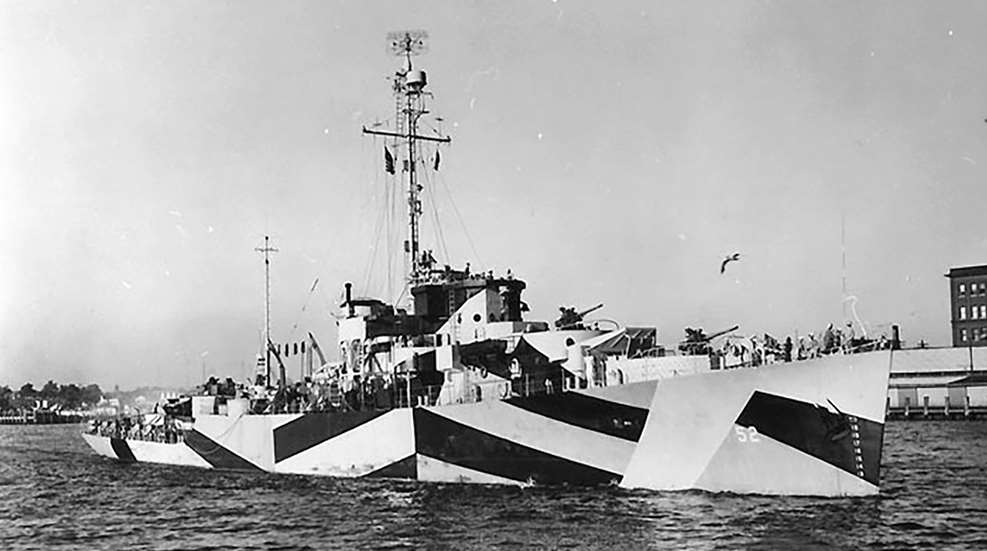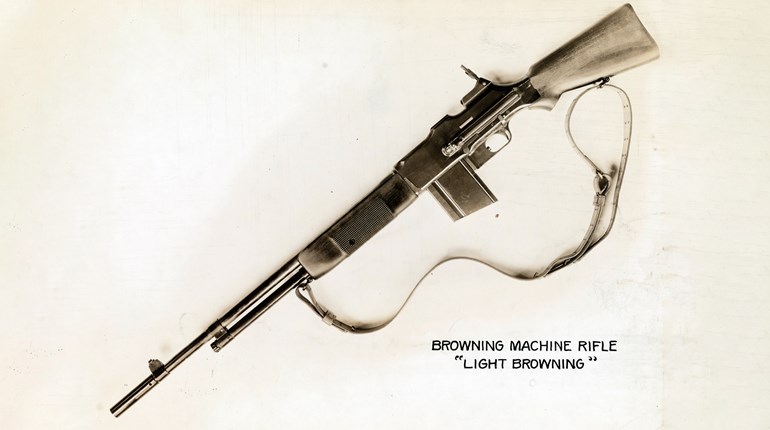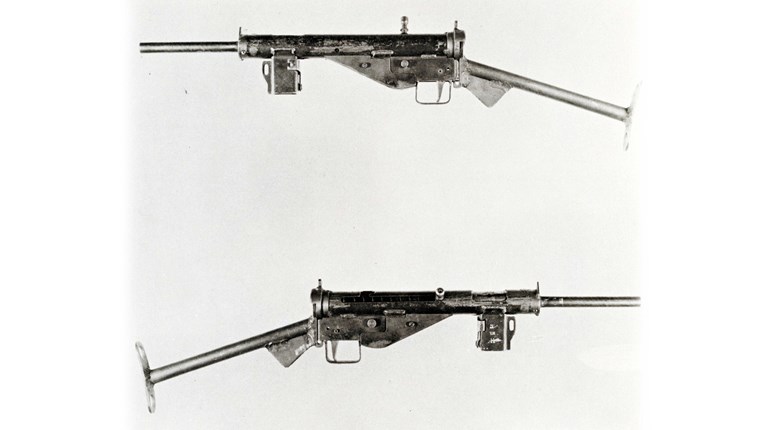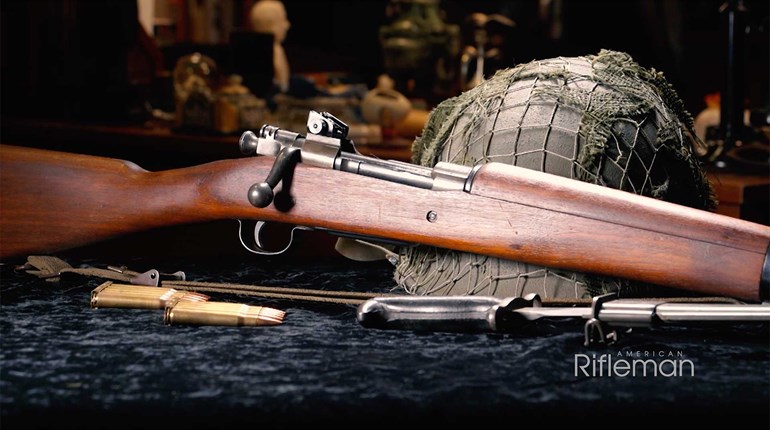
Durable goods like firearms allow us tangible links to our progenitors.The author’s rifle ties him to his Second World War-veteran grandfathers, including one who served aboard the USS Allentown (shown above).
A while back, I got the notion that my backburnered, personal-rifle projects had been producing offspring while I wasn’t looking. Sure enough, a much-needed inventory revealed that years of procrastination had allowed my list of things needing work to grow to 16 long guns. This textbook example of poor execution increased by several pending business R&D efforts and a trio of family guns that needed fixing. Obviously, I had a gun-project-hoarder problem that needed dealing with, but where to start?
The right answer was to begin by taking care of my ever-patient family members: Two Enfields—a No. 1 MK III and a No. 4 MK I—and a Marlin Model 81 later, I was still at square one with my personal guns. Oddly enough, a light was cast on the way ahead by two unlikely sources: my deceased grandfathers. A World War II-era, Army Air Corps photo of my paternal grandfather shows him in front of his barracks, holding a World War I-vintage Springfield M1903. I’ve long wondered why he had such an early model of the rifle, but I never pursued the mystery further. However, it came back to mind when I began studying some of my other Grandpa’s personal effects from World War II.
My mother’s father kept a notebook, travelogue and field manuals from his USCG basic training, Gunnery School and service in World War II aboard the USS Allentown. His handwritten Gunnery School notes detail every shipboard firearm a Gunner’s Mate had to master, including M1911 pistols, sub-machine guns, the M1 Carbine, M2 .50 BMG machine guns, depth charges, anti-aircraft systems and deck guns. Missing from those writings are references to the M1 Garand or the M1903 family of rifles. The Garand’s absence makes sense, as they were dedicated to front-line troops for much of the war. But, the lack of ’03 information perplexed me.
Other notes cover such topics as optical parallax, trajectory, powder compositions, bore-sighting, primer compounds and headspace. While never known as a “gun guy,” like so many others of his generation, my Grandpa had to become one to survive the war. When World War II ended, he simply came home, went back to work and raised a family just as his father had done after fighting in France during World War I. While considering my Army Air Corps grandfather’s basic-training photo, I realized that my Coast Guard Grandpa must have already been familiar with the M1903 by the time he attended Gunnery School. Sure enough, his “Blue Jacket Manual” from boot camp is packed with detailed, handwritten notes about the ’03 family.
Thus, my grandfathers’ wartime keepsakes pointed me toward one of my oldest projects-in-waiting: a 1919-manufactured, Springfield Armory M1903 that had been untouched since I purchased it from the Civilian Marksmanship Program 17 years ago. My Mark 1 variant’s receiver has the left-side ejection port used by the semi-automatic, .30-caliber, pistol-cartridge-firing Pedersen device. As with most Mark 1s, mine was returned to the standard M1903 configuration once the plan to field Pedersen devices was dropped. At some point, the barreled action wound up in a “Scant” stock, which is a partial-pistol-grip design made from a straight (S) stock blank.
After spending 90 minutes removing all the Cosmoline and deep cleaning it, I gave my rifle its first proper inspection in decades. The rugged stock is in rough shape, but the receiver and bolt are in great condition. The barrel, an original four-groove configuration, looks like the dark side of the moon through a borescope. Fortunately, the rifling is evident, pitting is minor and throat erosion fair.
Once looked over and checked for proper headspace, my ’03 was ready to shoot. Thanks to my Grandpa’s 1944 edition “Basic Field Manual, U.S. Rifle, Caliber .30, M1903,” zeroing the ladder sight was easy. My first 150-grain FMJ round was on paper at 100 yards, while shots two through six formed a vertically strung, 2.4-MOA group.
After sight corrections and a confirmation shot, five rounds of Hornady’s 168-grain Vintage Match .30-’06 Sprg. load printed a neatly centered, 1.5-MOA group. Considering the 104-year-old rifle’s bore condition and thin (for my eyes) front-sight blade, I was very happy with that performance. A clean-breaking, 5-pound trigger pull also helped make the veteran rifle a real pleasure to shoot. This trip down memory lane has me eyeing another long-ignored project: a pristine, World War II-era Remington ’03-A3 receiver that’s waiting for me to get caught up.
My maternal Grandpa’s records provide fascinating insights into the life of a young Gunner’s Mate, Third Class who was trying to come home in one piece. His notes mention action against the Japanese during the occupation of Morotai and the Battle of Leyte Gulf. My Grandpa’s Patrol Frigate finished the war with two campaign stars, and we have a contemporary newspaper clipping that describes how an attacking aircraft was shot down by the gun crew with which he was charged.
During one of our final conversations, my Grandpa told me that the Japanese plane had begun strafing the Allentown and while everyone was trying to hit it, his crew made the “lucky shot” with a 3-inch/50 Dual Purpose gun. He also shared some previously unheard anecdotes from his wartime service that were mixtures of G.I. humor and reminisces that had us both wiping our eyes. All were priceless reminders of the sacrifices made by his generation and the burdens they carried afterward.
In addition to service in the hands of my forefathers during the world wars, it turns out that an M1903 variant was used by my stepfather to qualify during USAF Basic training in the early 1960s. By then, the ’03 had largely been relegated to sniper or ceremonial use. When I shouldered my first Army-issued, turnbolt sniper rifle in the mid-1990s, the M1903 family had been fully retired for more than two decades. Still, sighting down the barrel of my MK1 provides a connection to my forefathers and makes me all the more grateful for the millions of U.S. veterans who shouldered the ’03—and all other service rifles—in defense of our mortal freedoms.





































